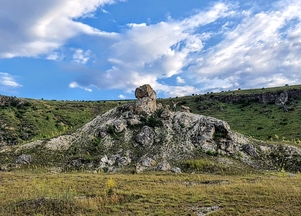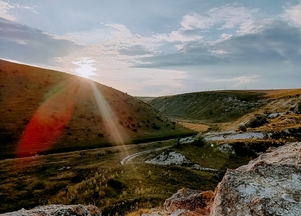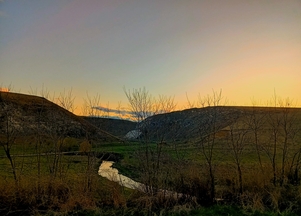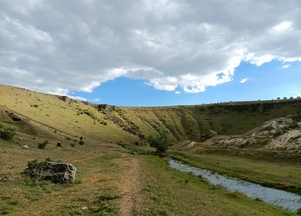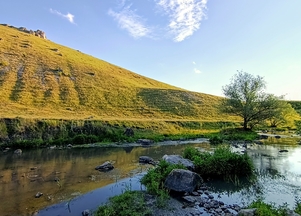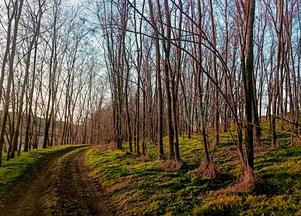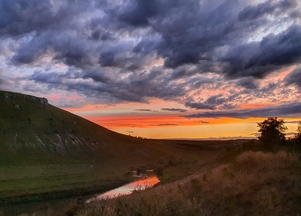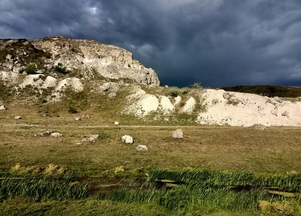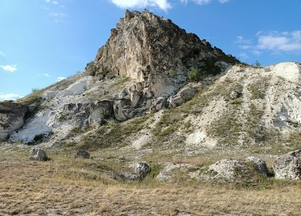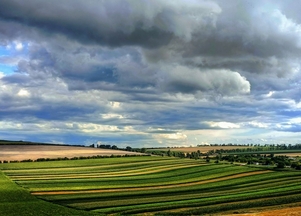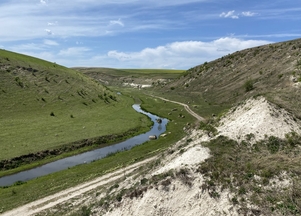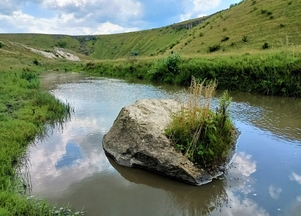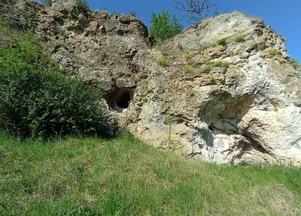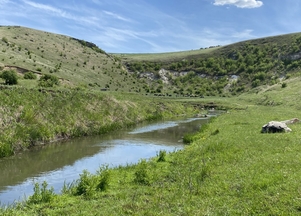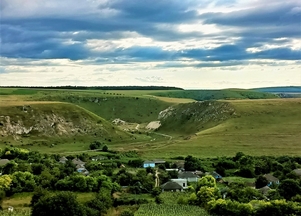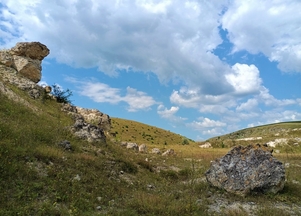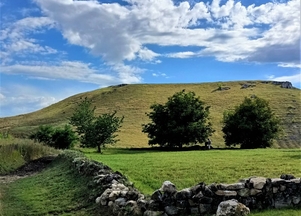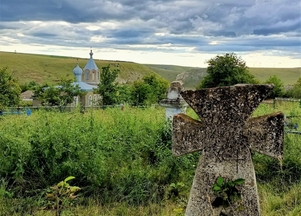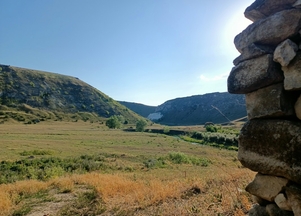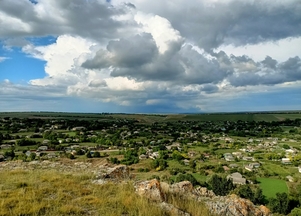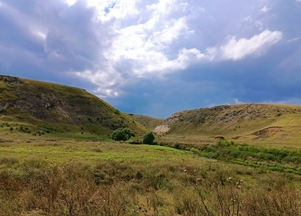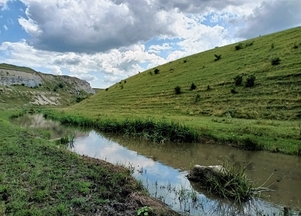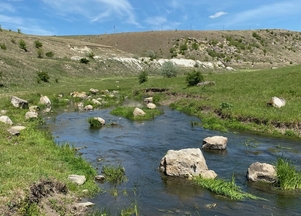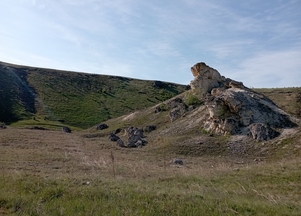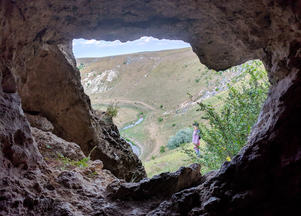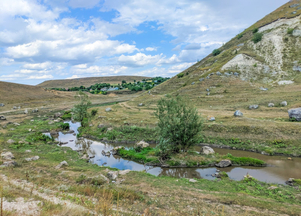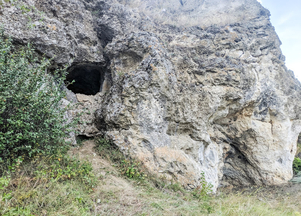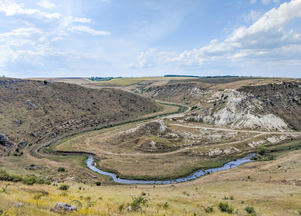Druța
History
If we were to speak only in a few sentences about the village of Druță, which is too difficult, then we would say that it is a village with the longest canyon of bare rocks that joins the gorge of the neighbouring village of Horodiște. It has an impressive water table and is surrounded by unique forests, natural springs and centuries-old wells that even today can be discovered both along the gorge and through the forests surrounding the village. A large part of the village is under state protection. It is the only village on the left side of the Ciuhur river, and it is the village that has been reborn after probably a long period as a Turkish Kișla (barracks, settlement). It is the village where nobles Nicolae Rosetti - Roznovanu and Ecaterina Ghica held their estates, the water mills on the Ciuhur near Horodiște also belonged to the nobles Rosetti - Roznovanu. It is certain that until the arrival of the Russians, the church of Stângăceni belonged to the Agapia Monastery in Neamt county. The old wooden church was dedicated to St. Nicholas.
Today the new church, built at the end of the 19th century, is dedicated to "The Assumption of the Virgin Mary" and is on the list of monuments protected by the state. The locality abounds in mysterious legends related to the period when the locality was under Turkish domination.
From the very beginnings (1612 - the year of first records), Druță was known as Stângăceni. By 1835, in the documents of the time, the village was known by both toponyms - Stângăceni and Druță. Then, the year is not known, the village is attested only with the current toponym. However, in Austrian and Russian statistical documents from the 18th century, the name of the village Stângăceni is not to be found. And the detailed documents with the information collected from the time of Hotin were sent to Constantinople. Most probably, the village had become a Turkish or Tatar kișla. This is based on the multiple battles with the Tatars near Costești, the most important being the battle of Stefănești in 1518, in which the Tatars were defeated in a ford of the Ciuhur river near Prut.
Later in the Austrian statistics several Ottoman settlements are mentioned in the Ciuhur bypass. These were not inhabitable but controlled as strategic territory. Moreover, the Rada forest of Pociumbeni commune of the Druță village is named after a Turkish woman. Rada was the lover of Țugui, a local outlaw, who remained in the village legend as the one who punished thieves and tortured them in a small cave near the village, today known as "Țugui's cave". Being the only settlement on the left side of the river Ciuhur, it explains the name Stângăceni (stânga in RO means left). The legends left by the elders say that it was on the territory of today's Druta village that separated the two great Ottoman and Moldavian armies. The depths of the gorge near Druta was the perfect camp for the Turkish army. The Ciuhur River, whose name has Turanian origins, keeps its fiercest medieval battles a well kept secret. The rocks and stony canyon along the river between Druta and Horodiste served a perfect strategic plateau in the battles. Ciuhurul or Șihorul, as the locals still call it, is a tributary of the Prut, a hydronym attested much earlier than the toponym Stângăceni. It appears in documents from the time of Alexander the Good, in 1429, only with a different name - Cihru. According to scholars Ion Dron and Anatol Eremia, its name has a Turanian origin, Ciugur/ciucur meaning in Romanian "water hole, ravine, valley", although it runs for 90 km from the region of Druta village to its outlet in Prut. The river Ciuhur only passes through the Prut cliffs, giving the riverbed a picturesque setting.
In 1806, the Hotin region (subjugated by the Turks) was controlled by Cara-Mehmed- Pasha, the border being at Ciuhur from Lipcani downwards.
Moreover, the captain of the Ciuhur area had several Turkish cavalries (beșlie), intended to provide protection to the Ottoman army.
Later, after 1850, the locality was renamed Druță (diminutive of the name of the landlord who owned the estate, Doru, Doruț...Druț...from Teodor Vîrnav, the first Romanian memorialist) who bought the Pociumbeni estate from Countess Ecaterina Ghica. The Bohemian cemetery, as well as part of the wall of Virnav's estate can still be seen today in the village of Pociumbeni. Tudor Virnav's memoirs were reprinted in 2000 and are available for purchase.
Legend
The "Țugui's cave" or "Țugui's grotto". Legend has it that 250 years ago, the fearless outlaw Țugui and his Turkish girlfriend Rada, in order to avoid falling prey to the Turks, hid in that cave or forest which later was dubbed the "Rada Forest". And the families of the peasants, who were resisting the Ottoman yoke in many ways, also hid in that cave. The Turks took artifacts, grain, animals, and the most beautiful girls as spoils". Once alone, Tugui became a ranger guarding the forest that bore his beloved's name. He was also the guardian of the lands on the left side of the Ciuhur River. In case of theft in the neighbouring villages, Țugui would find the thieves, hold them prisoner for 2-3 days to teach them a lesson in "good manners". Țugui's cave could hold 8-10 people. Since then, Țugui's cave has been preserved as a reminder.
The Spring of Coltun. Among the millenary rocks, a very old spring with pure and clear water takes its course. The old people say that the water of the ancestral spring is clean and healthy, used as a source of livelihood for the whole village in times of heat, when the water in the wells dries up, but also when the locals graze their cattle. The water of the spring was even healing wounds obtained during battles. The water was tested and found to be one of the purest.
The village on the banks of the Ciuhur River is one of the few places where well poles are still preserved. An old well - "The Salvation well" represents a real history book of the place. A place, where life has meaning, even if this meaning has been abandoned. The well was built at the foot of the cliffs, in the past it was the only place where the villagers could use the water as a source of survival in hot weather.
Beautiful places
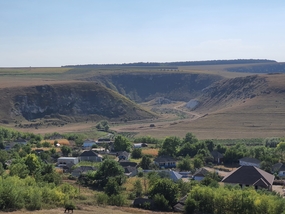
Druță Gorge
A walk on the bottom of the Sarmatian sea. The village is located on the left side of the gorge, intersected by the Ciuhur river, which hides in a long and very winding gorge, which over the course of more than 7 million years, managed to dig a vast valley and quite deep.
Read more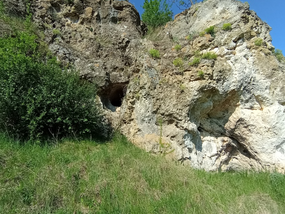
Țugui's grotto
The legend says that 250 years ago, the fearless outlaw Țugui with his Turkish girlfriend Rada, in order not to fall prey to the Turks, hid in that cave or in the forest, from where it later got its name, Rada Forest. And the families of the peasants were in every way against the Ottoman yoke, so they hid in that cave
Read more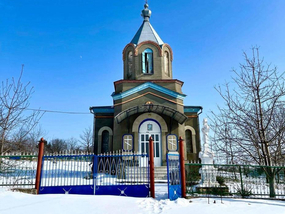
Druţa, "St. Nicolae" The Church.
At Druta is an old church dating from the 19th century. "Monument with three crosses", which is preserved near the church even today, about 300 hundred years ago, was the prestol (altar) of the former wooden church. That church was sold to Şarbaca.
Read moreVideo presentation
In the following video presentation, you will be invited to discover the beauty of the banks of the Prut River in the Republic of Moldova. This picturesque area is known for its idyllic landscapes, where the river Prut flows quietly through the hills
photos by Olivia Furtună - https://www.facebook.com/o.furtuna.e
Useful Links
https://ro.wikipedia.org/wiki/Dru%C8%9Ba,_R%C3%AE%C8%99cani
https://localitati.casata.md/index.php?action=viewlocalitate&id=7140


 ro
ro
 ru
ru

